If there's one universal truth every small business can agree on, it's this:
When you build an app, your outgoings skyrocket. Research, design, development, testing, marketing, listing, maintenance... The list goes on.
That makes it imperative for app owners to get ROI — and one of the best ways to do this is by monetizing your app.
To do that, though, you not only need to attract users, but also keep them there.
With 30-day retention rates hovering as low as 6%, this is easier said than done. That's where I come in.
For this blog, I reached out to a circle of UX experts to find 17 proven strategies that increase app engagement for real businesses.
Let’s dive in 👇
What is mobile app engagement?
Mobile app engagement is how much, how often and simply how users use an app. High engagement scores indicate that your users find value in using your app. This is important because engaged users are loyal users — and loyal users can be converted into paying users.
What are the benefits of increasing app user engagement?
Today, mobile apps experience up to 95% churn rates within the first 90 days of their installation. That means only 1 in 20 people use an app 90 days after installing it. Therefore, you need an effective mobile app engagement strategy to make your app sticky.
Increases user satisfaction
Fulfilling experiences create satisfied users. And satisfied users help your app in 3 ways:
- They're more likely to continue using your app, meaning you spend less on user acquisition
- They recommend your app to others by giving positive reviews on mobile app stores
- They're likely to engage with your brand, increasing revenue potential, which we’ll discuss now 👇
Boosts revenue potential
Whether through in-app purchases or in-app advertising, increasing user engagement significantly enhances your app’s money-making potential.
High engagement makes it more likely users will subscribe to your premium app features and is desirable for advertisers, making adverts on your app more expensive.
Reduces churn rate
A high churn rate is the silent killer of any app. However, when app engagement rates go up, churn rates drop. This is because the more your users are engaged, the fewer uninstall your app.
So if you fancy more hard-won users for your app, you should work on increasing key mobile app engagement metrics.
What are key app engagement metrics?
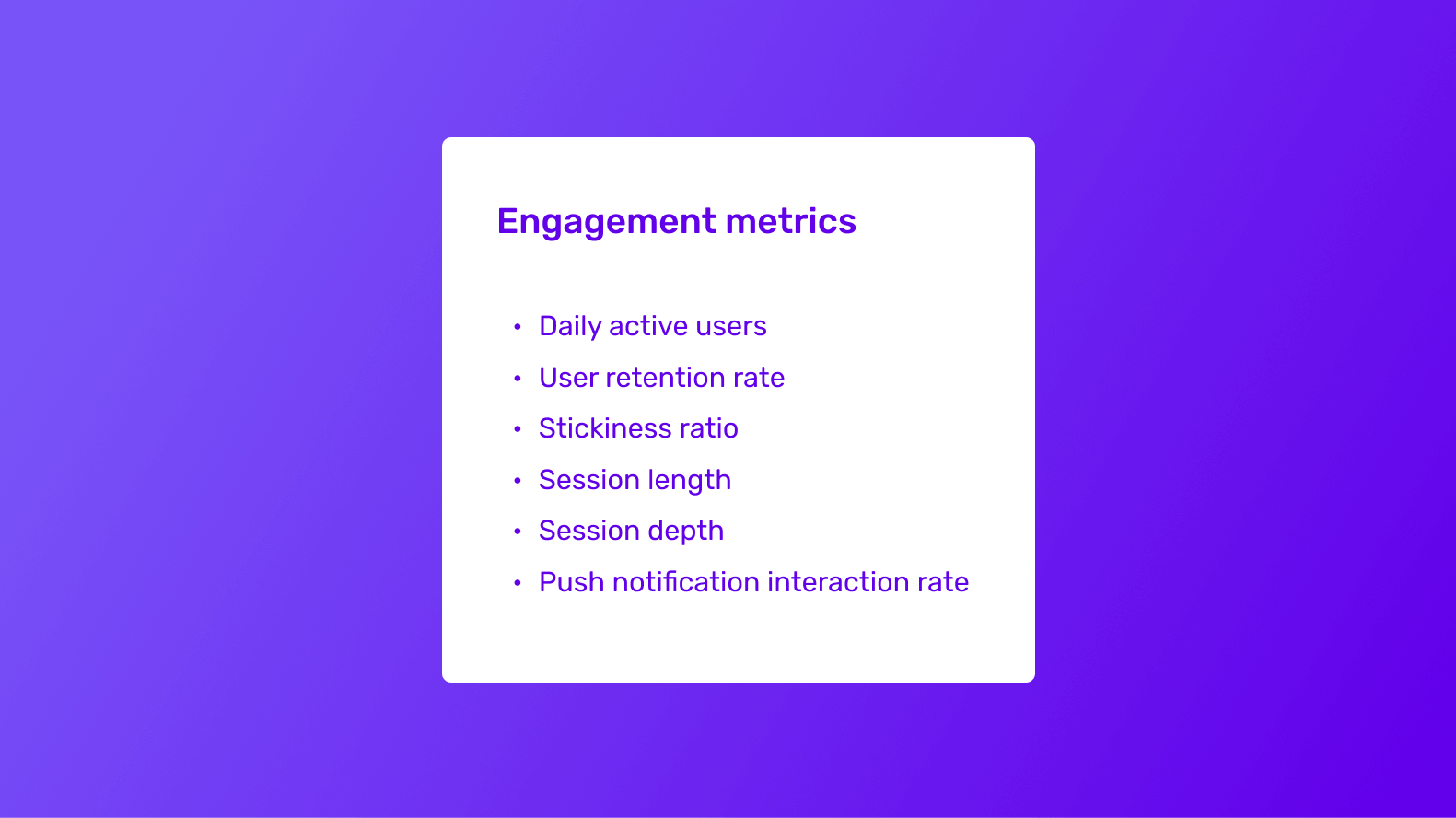
App engagement metrics are a specific type of app performance metric that determine whether your app successfully hooks and retains users.
The higher these numbers are for your app, the more your app becomes an integral part of your users' daily routines. The lower these numbers, the higher the uninstalls.
1 - Daily active users (DAU)
DAU tracks the number of users who actively open or engage with your app on a daily basis.
There’s no formula to calculate it, just the number of unique users who used your app on a specific day.
Not all mobile apps need to be opened every day, so depending on your business, you can track weekly active users (WAU), monthly active users (MAU) or average daily active users (ADAU).
For instance, if you have a healthcare app that reminds users to take pills every day, then track DAU. If your app tracks portfolio investment performance, then tracking MAU makes more sense.
Top tip
To increase daily active users, keep things fresh by adding new features and content.
2 - User retention rate
Not everyone will actively use your app, but some users will find value in your app and revisit it frequently. This is where your retention rate comes into play.
Formula for user retention rate:
Retention rate = (No. of users at the end of a period - No. of new users acquired during that period) ÷ No. of users at the start X 100 |
To make this clearer, let’s say you have:
- 1,000 users at the beginning of the third quarter
- 1,500 at the end of the third quarter
- Of these 1,500, there are 800 new users
So in this case:
(1,500 - 800) ÷ 1,000 X 100 = 70%
We can say here that you have a 70% quarterly retention rate.
Depending on the business you’re in, you need to calculate retention rates over a realistic timeline. For example, a hotel booking app shouldn’t measure weekly retention rates as the same people don’t tend to use them as often. Instead, they should calculate the retention rate on a yearly basis.
On the other hand, ecommerce apps selling low-cost goods should look out for monthly retention rates, as people tend to use them more often.
So what’s a good retention rate? Ideally, a good retention rate should range anywhere between 10-30%.
3 - Stickiness ratio
Stickiness ratio measures how frequently and consistently your users engage with your app.
This metric takes into account both daily active users (DAU) and monthly active users (MAU) to measure how many users keep coming back to your app regularly.
Formula for stickiness ratio:
Stickiness ratio = Daily active users ÷ monthly active users X 100 |
For example, if you have 500 daily active users and your monthly active users are 10,000, then your stickiness ratio is:
500 ÷ 10000 X 100 = 5%
The higher the ratio, the stickier your app is. A sticky ratio indicates that your app has succeeded in making your users return frequently and you can be much more profitable.
Usually, a stickiness ratio over 20% is considered good. If you’re scoring 50% or higher, then you’re in the Facebook category, which is impressively high.
Top tip
To increase stickiness, focus on personalising app user experience by sending segmented push notifications and recommending relevant products and content.
4 - Session length
Session length measures the average duration a single user spends within your app.
For advertising-driven apps, high session length is a win. Your users are spending time looking at adverts and making you money.
But for apps with other purchases, session length might be less important, or even a hindrance to user experience. For example, an ecommerce business may be happy with a shorter session length as long as their users are converting.
Top tip
Session length alone can be quite a confusing metric and should be used with session depth to get a clear picture. Session length can also be used in conjunction with other key metrics like app load time, crashes and uninstalls, so you can work out if there are any correlations.
5 - Session depth
Session depth tracks the number of pages or screens the user visits in one session.
The higher the session depth, the more the user is engaging with the app. However, this can also mean it’s taking too long to navigate through your app to take the desired action.
Session depth, along with the session length, tells you the effectiveness of your app’s user interface and design and, at the same time, helps you identify areas for improvement in the user experience.
6 - Push notification interaction rate (PNIR)
Push notification interaction rate is an engagement metric that measures how users respond to the push notifications sent by your app.
This metric is a bit tricky.
Yes, it tells you the level of engagement with your notifications, but this rate can take a serious hit if you bombard users with notifications. Worse, users may stop actively using your app or uninstall it completely if you do so.
Formula for push notification interaction rate:
PNIR = (No. of users who interacted with notification ÷ Total no. of notifications sent) X 100 |
To maintain a healthy push notification interaction rate, you need to keep the denominator — that’s the total number of notifications sent — relatively low. You can do this by following best practices for push notifications. Some app makers, such as Duolingo, have done deep research into perfecting their push notification strategy.
The ideal number for this metric varies for different industries and platforms. iOS has a push notification interaction rate of 3.4% and Android has a rate of 4.6%.
Top tip
To increase PNIR, use rich push notifications, which allow you to add media such as photos and videos, enticing mobile app users to click on them.
Want to start your app project with us?
Book a demoSpeak with one of our product experts today.
By proceeding you agree to Builder.ai’s privacy policy and terms and conditions

17 proven strategies to increase app engagement
Now that you know why app engagement is important and how you can measure it, let’s dive into sure-fire strategies to increase it. 👇
1 - Decrease onboarding friction
Onboarding is the process of helping users to navigate your app and it plays an important role in user engagement. A long onboarding process creates friction along the user journey, making users confused or annoyed. It also prevents them from understanding the core features of your app and not finding real value in it.
You need to design your app onboarding process in a way that’s simple and educates users about its features.
Mindfulness app, Headspace, provides a guided tour of its meditation feature and interactive tutorials to help users understand its mindfulness tools effectively.
Erica Ylimäki, Growth Marketer at Trustmary Group, says:
“Although we use many techniques for increasing customer engagement, by removing unnecessary steps from our onboarding and moving to a 3-step onboarding we were able to increase the number of active mobile app users by 100% in two months.”
2 - Use personalised recommendations
Personalised recommendations are a way to help your users get the most out of your app.
Analysis of a user’s past interactions and preferences lets you serve personalised content and recommendations.
For instance, a finance app could analyse a user’s spending patterns to provide a whole range of recommendations on saving or spending more effectively.
Personalised recommendations create a deeper connection between a user and an app, leading to increased engagement.
John Pennypacker, VP of Sales and Marketing at Deep Cognition, says:
“Our app employs advanced machine learning models to analyse individual usage patterns and preferences. We then surface tailored content recommendations that align with each user's goals and proficiency level. Engagement metrics like session duration and feature adoption have surged since rolling out this functionality.”
3 - Leverage push notifications
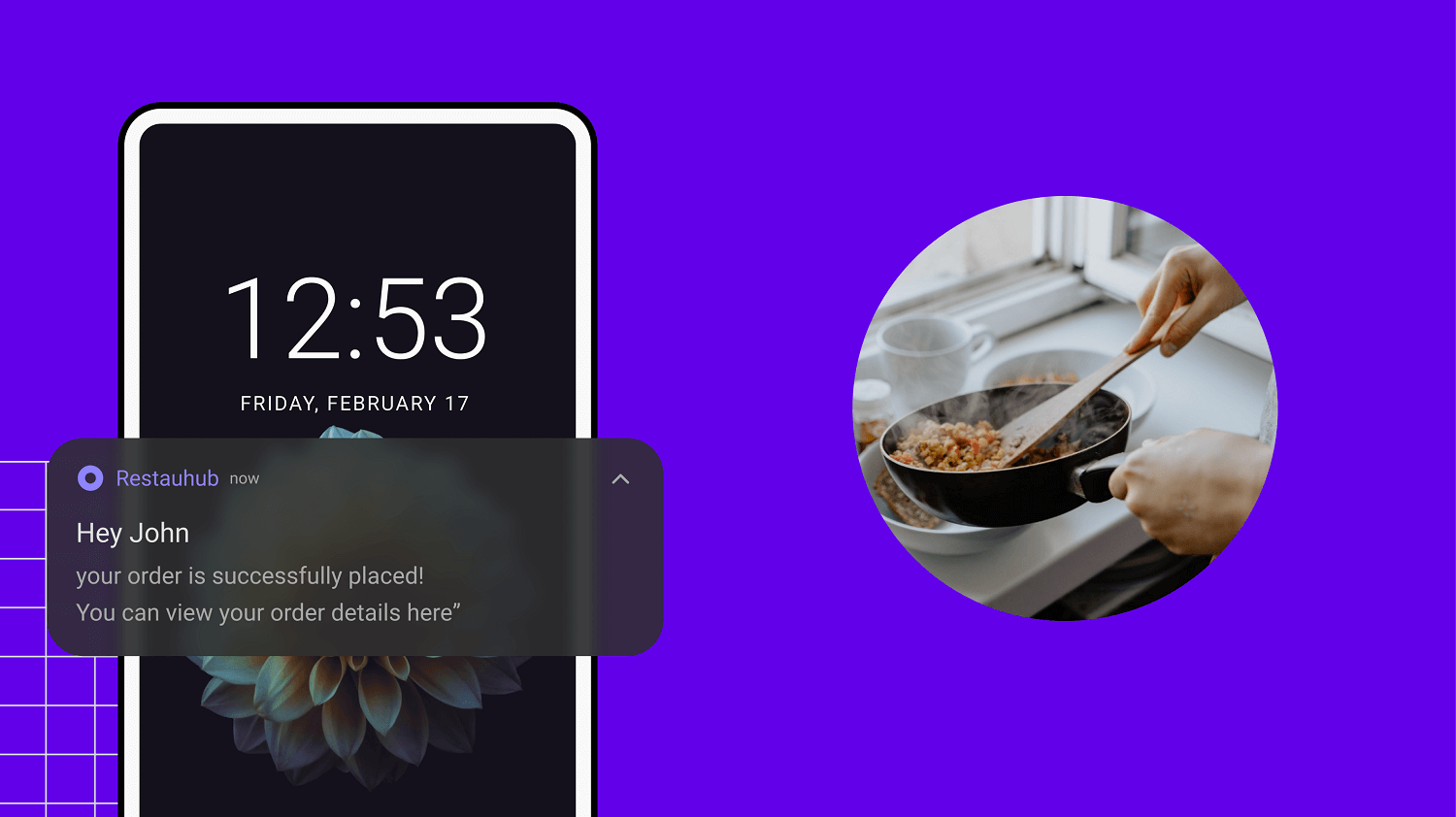
Have you ever received a notification while scrolling through your social media feed and then, before you know it, you’re buying something?
This is how push notifications work, bringing you back to the app where you left off.
Push notifications enable you to send messages to your users, enticing them to return to your app with promotions, rewards or simply a reminder about what they’re missing out on. This strategy should be at the top of your list when it comes to increasing your app’s engagement.
These little messages have become one of the biggest app engagement strategies for any app. Well-timed and personalised push notifications can see up to 90% open rates and up to 54% conversion rates.
You can also use them in several ways. For instance, if you’re running a food ordering app, you could send relevant notifications to a user with a discount on their favourite food items.
And if you’re running an e-learning app, you could remind users to complete their courses and notify them when their learning streaks are in danger.
One thing to remember while leveraging push notifications is that they should be used with care, otherwise, your users might turn them off. If used correctly, push notifications can deliver value to customers and revenue to your business.
Sam Tarantino, founder Harmonic Reach, says
“Utilising push notifications tailored to user preferences helped maintain high engagement levels. These personalised push notifications were based on user behaviour, such as reminding them of unfinished playlists or alerting them to new music releases in their preferred genres.
“The results were clear: a 20% uplift in engagement rates from users who received these personalised notifications compared to those who didn't. Implementing these targeted app engagement strategies was crucial for both retaining our existing base and attracting new users through word-of-mouth and direct referrals.”
4 - Use gamification techniques
The concept of gamification borrows from the world of gaming to hype up everyday stuff. App makers realised they can apply the techniques that make games so compulsive to make learning a language (for example) just as addictive.
So, how does it work? A basic technique is to award points for engaging with things in your app. They can redeem these points for exclusive app features or content. You can give them badges, which they can show off for what they’ve accomplished.
You could also offer challenges and quests that create a feeling of accomplishment.
In the Duolingo app, users can earn virtual currency for completing their lessons and challenges and can purchase items in the Duolingo Store using the currency.
Laviet Joaquin, Marketing Head at TP-Link, says:
“At TP-Link, we've implemented gamification techniques to make the app more engaging and fun. We've introduced badges, rewards and challenges that encourage users to explore the app's features. This has resulted in increased engagement and usage of the app.”
5 - Allow in-app messaging
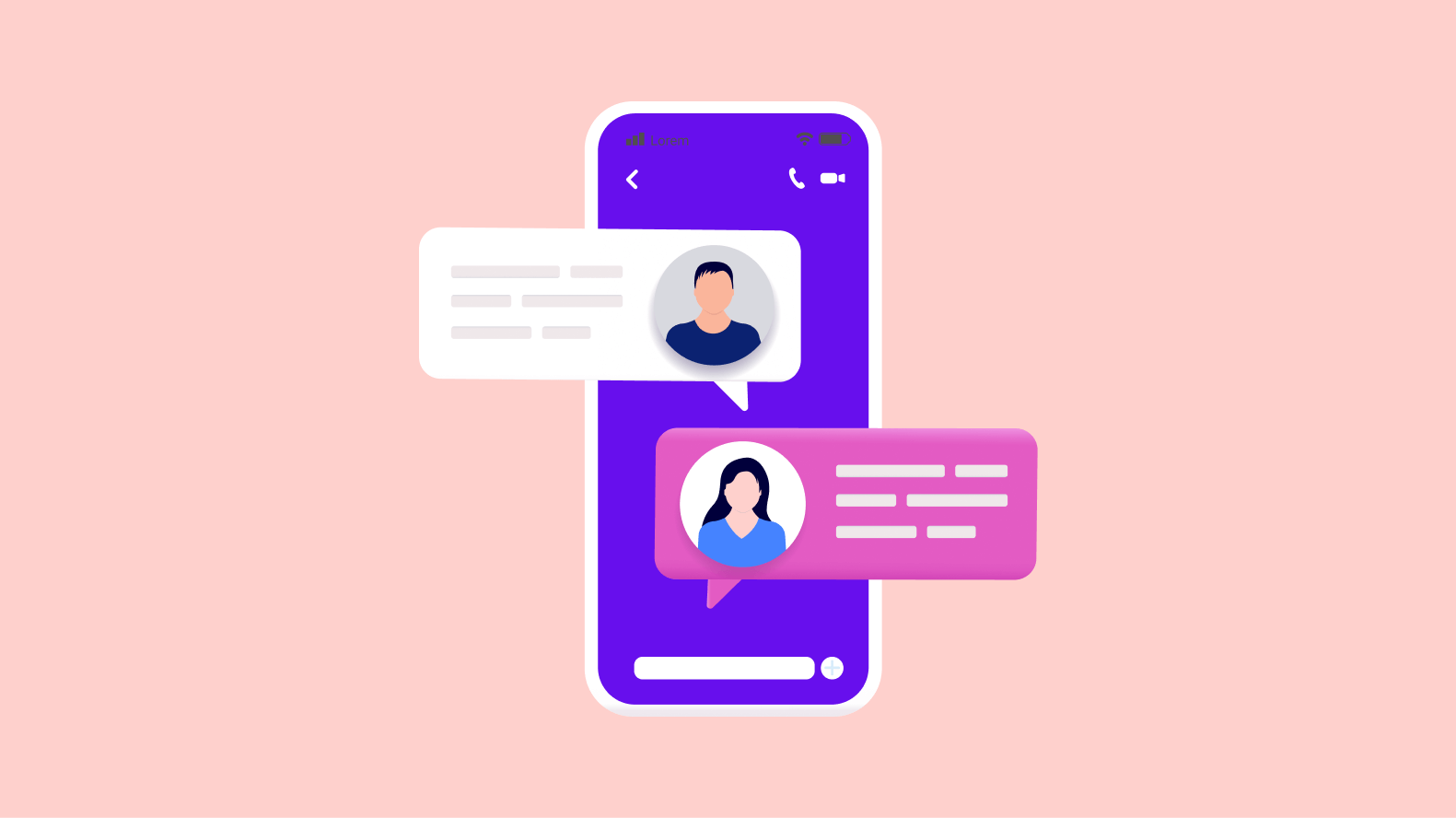
In-app messaging enables users to connect with other users through real-time chatting.
To apply this strategy, provide your users with features like group chat and voice calls where they can exchange messages, images and video seamlessly within the app.
Instagram offers in-app messaging, where users can communicate with others and send memes and cat videos.
Lily, Marketing Lead at Outverse, explains:
“We've implemented in-app messaging to facilitate direct communication between users and our support team. This has led to the enhanced overall user experience and is fostering a sense of connection.”
Tread carefully though! Unrestricted app messages be exploited by bad actors and create hazards for you and your users.
6 - Optimise app performance
No one wants to use a laggy app that keeps crashing. Your app needs to be fast and reliable if you want your users to have a great app experience.
Eliminate bugs and optimise app load times to deliver a positive user experience (UX). Users will have more fun with an app that offers a seamless experience.
Top tip
Rather than bulk loading assets, implement lazy loading for resources like images and videos. Lazy loading is a technique that prioritises the loading of critical content first, giving performance a big boost.
TikTok uses this technique. When you scroll through your feed, the app doesn’t load all the images and videos at once. Instead, it loads content as you scroll down and prioritises the content that you’re currently viewing.
7 - Offer incentives and rewards
Now this one may sound similar to using gamification techniques – but there’s a difference!
Whereas gamification involves adding game-like elements such as points, badges and challenges, offering incentives and rewards involves giving users tangible rewards for completing certain actions.
For instance, Starbucks offers a reward program where users earn stars for making purchases through the app. Users can redeem these stars for free drinks, coffee beans and mugs.
Debbie Moran, Marketing Manager at RecurPost, says:
“Implementing a rewards program where users earned points for completing actions like scheduling posts or referring friends was a game-changer. It motivated our users to stay engaged with the app and provided a tangible benefit for their efforts. This resulted in increased user activity and retention over time.”
8 - Offer discounts
This is probably the easiest app engagement strategy to implement and the most straightforward way to deliver value to your users.
By offering exclusive access and referral rewards, you directly incentivise your users to join up, stay and engage.
Offer incentives and rewards to complete an action, such as discounts on purchases made within the app.
For instance, Google gives Play Store credit to users who answer questions or upload shopping receipts.
Will Yang, Head of Growth and Marketing at Instrumentl, says:
“For discounts and coupons, we offered promotional access and referral rewards to users. It not only enhanced user retention by bolstering their commitment but also expanded our user base through new sign-ups.”
9 - User generated content (UGC)
User generated content (UGC) is original content that engaged users create for your brand at no cost to you. It can be in any form, like images, videos, playlists and reviews.
UGC is a fast-growing area that you need to work on. It’s estimated that by 2033, 78% of all online content will be UGC.
In this strategy, you encourage customers to create content for your brand and share it with others on social media platforms. You can also request reviews and testimonials from your customers about their experience with your app.
The benefit?
Brands that integrate user-generated content into their marketing campaigns see a 25% increase in customer engagement.
To take this even further, you should incentivise your customers with discounts or special offers to create and post content.
YouTube, through its partner program, incentivises content creators to create videos and grow their audience. It monetises them based on watch hours and the number of subscribers they gather.
Sam Tarantino, founder of Harmonic Reach, says:
“We capitalised on UGC to encourage users to create and share playlists. This not only enhanced the personalisation of the experience but also kept the content fresh and engaging, boosting daily engagements.
Our data showed that users involved in content creation were 50% more likely to return daily and shared content at double the rate of casual listeners, significantly enhancing organic growth.”
10 - Use CTA buttons
Call-to-action (CTA) buttons prompt your users to take specific actions on your app. To use CTA buttons effectively, you need to understand the user journey of your app.
You can then strategically place CTA buttons within your app interface to increase user engagement. For instance, for sign-up, make purchases, use new features or explore more content.
Airbnb uses CTA buttons to encourage users to book accommodations or explore new destinations.
Tristan Harris, Senior Marketing Manager at Thrive Internet, explains:
“CTA buttons help our audience take action and engage with our content. It also serves as a roadmap, guiding our readers on what actions to take next.
“When planning our CTA buttons, we always create "a sense of urgency" by using words such as "now" or "limited time offer" to encourage immediate action. We learned that creating a sense of urgency can increase conversion rates.”
11 - Build an in-app community
Sometimes overlooked, an in-app community can work wonders to increase your app engagement.
For instance, Strava created a community of 120 million engaged users where they can connect with other fitness enthusiasts and share their achievements. In the app, users can swap workout routines, cheer each other on and even throw friendly challenges. It makes the app so much more than just somewhere to record your exercise.
Lily Bradic, Marketing Lead at Outverse, explains how they built an in-app community for their SaaS business. She says:
“By integrating a community forum feature directly within the app, we've encouraged users to interact, share insights and troubleshoot together, creating a vibrant ecosystem of mutual support and knowledge sharing.”
12 - Offer in-app customer support
Customer support can play a huge role in a user’s experience. Quick and accurate resolution of a problem creates a warm feeling and reduces churn rates.
But providing a fully-fledged customer support offering with call centres is a huge undertaking that newly launched apps might not have the resources for.
The good news is it’s still possible to offer customer support at any budget.
Chatbots are a great way for customers to resolve issues themselves. And with the growth of AI models, chatbots are only getting better and better. In fact, 69% of users now prefer chatbots for quick communication.
Besides chatbots, FAQs and other support documentation can help customers solve their own problems.
If you can go further, email or ticket-based communication with a support agent is the next step. With that, most problems can be resolved.
Uber Eats uses in-app customer support to address concerns if the delivered food is of poor quality. Users can also request refunds or replacements, all within the app.
Arther Miller, Marketing Manager at GHC GmbH, says:
“We've recognised the importance of maintaining high-quality in-app customer support, including chatbots, to promptly address user queries and concerns. This approach has led to increased user satisfaction and trust in our app.”
13 - Reach out to all users
Run marketing campaigns to reach out to all users, including new users, those at risk of leaving and inactive users.
To do this, you need to segment your user base based on their journey with your app. Only after a successful segmentation, can you create personalised campaigns for each set of users so that the interactions feel personal.
For instance, Netflix sends personalised emails and notifications to new users to recommend popular shows and movies based on their viewing preferences.
Additionally, Netflix also sends re-engagement notifications to inactive users to highlight new and exclusive content, encouraging them to return to the app.
Ritesh Raj, CPO CuddlyNest says:
“We've made a conscious effort to reach out to all users. We've segmented our users into different categories: new users, active users, and users who are about to become inactive.
“We then tailor our communication and offers based on these segments. This strategy has helped us retain our existing users and reactivate users who were about to become inactive.”
14 - Inform about your product updates, new features and unused features
When you roll out a new feature or update your app, inform your users to keep them in the loop. Use personalised push notifications, emails and social media campaigns to spread the word and let your users know about the features they’ve been asking for.
By doing this, you’re not only re-engaging inactive users who might have left because of missing features but also keeping active users engaged with your latest features and updates.
Stefan Chekanov, co-founder and CEO of Brosix, explains:
“We always send email updates to our users when we have a critical update that requires their attention. In these emails, we also encourage them to review new features, which incentivises them to explore our app’s full functionality.
Because we are so proactive in our communication, our users are highly engaged and responsive to any updates and communications we provide.”
15 - Listen to your customers
Insert feedback forms at strategic points in your app. These could be as simple as a happy and sad face to click about a feature or journey, a multiple choice question, or a written answer.
This will encourage two-way communication and make them feel valued. This back and forth will help you gather feedback, solve customer problems and improve product functionality over time.
Plus, it warms up people to your brand and makes them want to share their personal information with you like location, preferences and so on.
Use in-app surveys to gather feedback and understand your user’s pain points and suggestions for improvement. To go one step further, you can offer them incentives to fill survey forms.
For instance, Evernote uses short and to-the-point in-app questions to gather information from users. They use this information to track how their product is doing and how they can improve it.
16 - Use app analytics
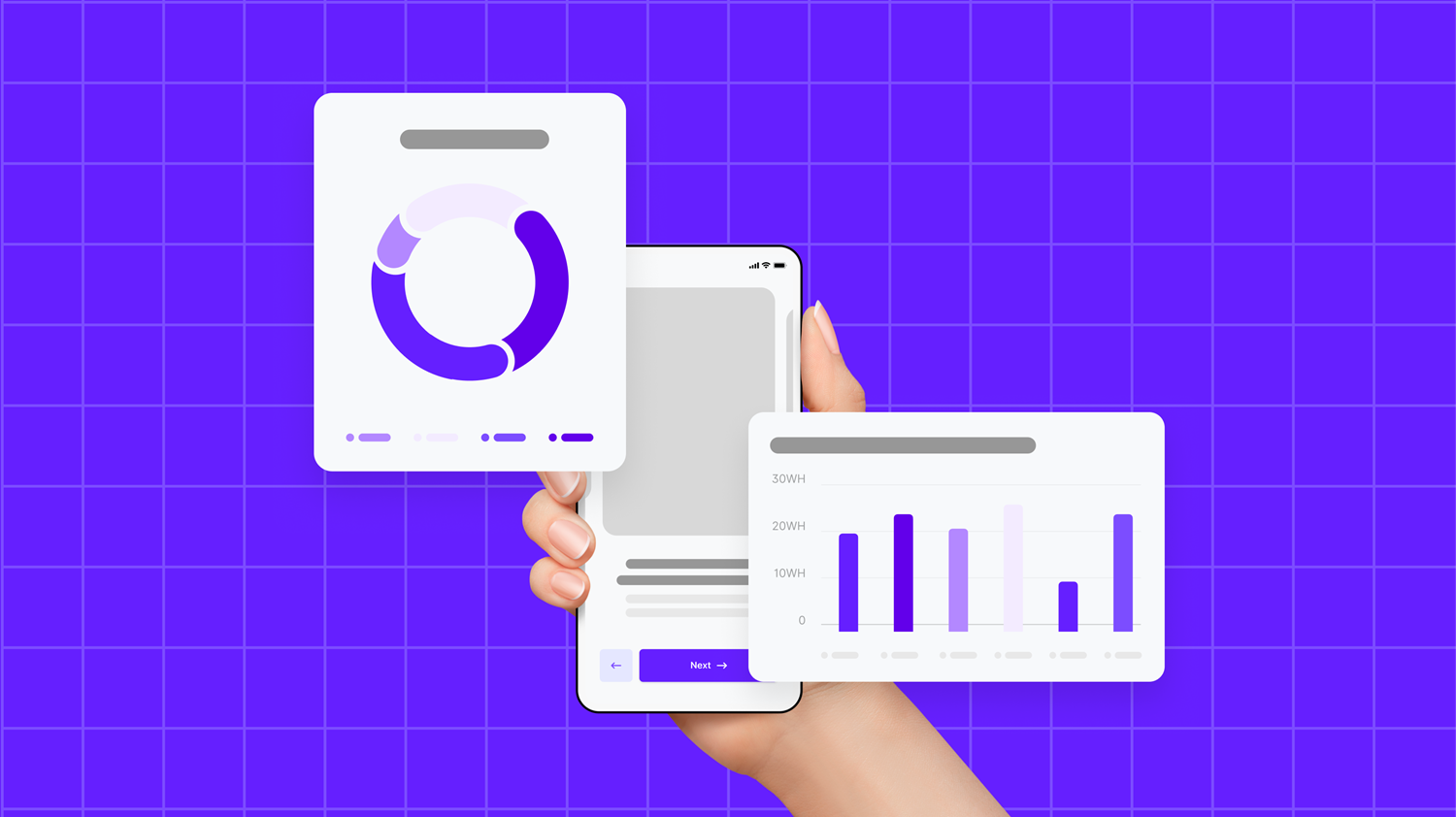
App analytics give you a birds-eye view of your app’s performance and operations. Without it, you’re flying blind.
Imagine you run a hotel booking app. Using app analytics, you know which destinations are popular in which season or which hotels are the most popular. You could give their visibility a boost during particular seasons — or feature lesser-known destinations that customers will love, too.
Analytics give you a clear picture of what your users are doing and what might be causing engagement to drop. This data is vital so you can make smart, data-driven decisions that help your app scale.
For instance, in an ecommerce app, you can track which products are flying off shelves, which geographies aren’t performing as intended and which products you can provide discounts on.
17 - Regular maintenance and updates
Poor performance is one of the most common reasons for low app engagement. If you want your app to perform at its best, you have to regularly maintain your app and resolve bugs that slow down your app.
Regular updates and continuous improvements ensure that your app remains competitive, user-friendly and capable of achieving long-term market success.
To do this, you need to be proactive and work with an app developer who provides support from the beginning to the end of your app build — and beyond.
Debbie Moran, Marketing Manager at RecurPost, says:
“Prioritising regular maintenance and updates was crucial for keeping our app relevant and user-friendly.
“By addressing user feedback and continuously improving the app experience, we kept users engaged and satisfied.
“This proactive approach also helped us stay ahead of the competition and maintain a loyal user base.”
Conclusion
With the average app retention rate at 6%, staying ahead is tough. But by implementing expert advice and monitoring results, you'll boost engagement of your app.
To give yourself the best chance of increasing app engagement, you may need to add new features, improve app performance and set up event-based triggers, among other things. Here, Builder.ai can help.
Hit the banner below to book a call with our team and skyrocket your app engagement today 👇
Want to start your app project with us?
Book a demoSpeak with one of our product experts today.
By proceeding you agree to Builder.ai’s privacy policy and terms and conditions

Natasha is a Productologist at Builder.ai. She has over 14 years of experience in product management expertise, specialising in Agile methodologies and product development to transform client visions into cutting-edge app and web solutions. Her skills extend to key account management, digital strategy, marketing management and integrated marketing.

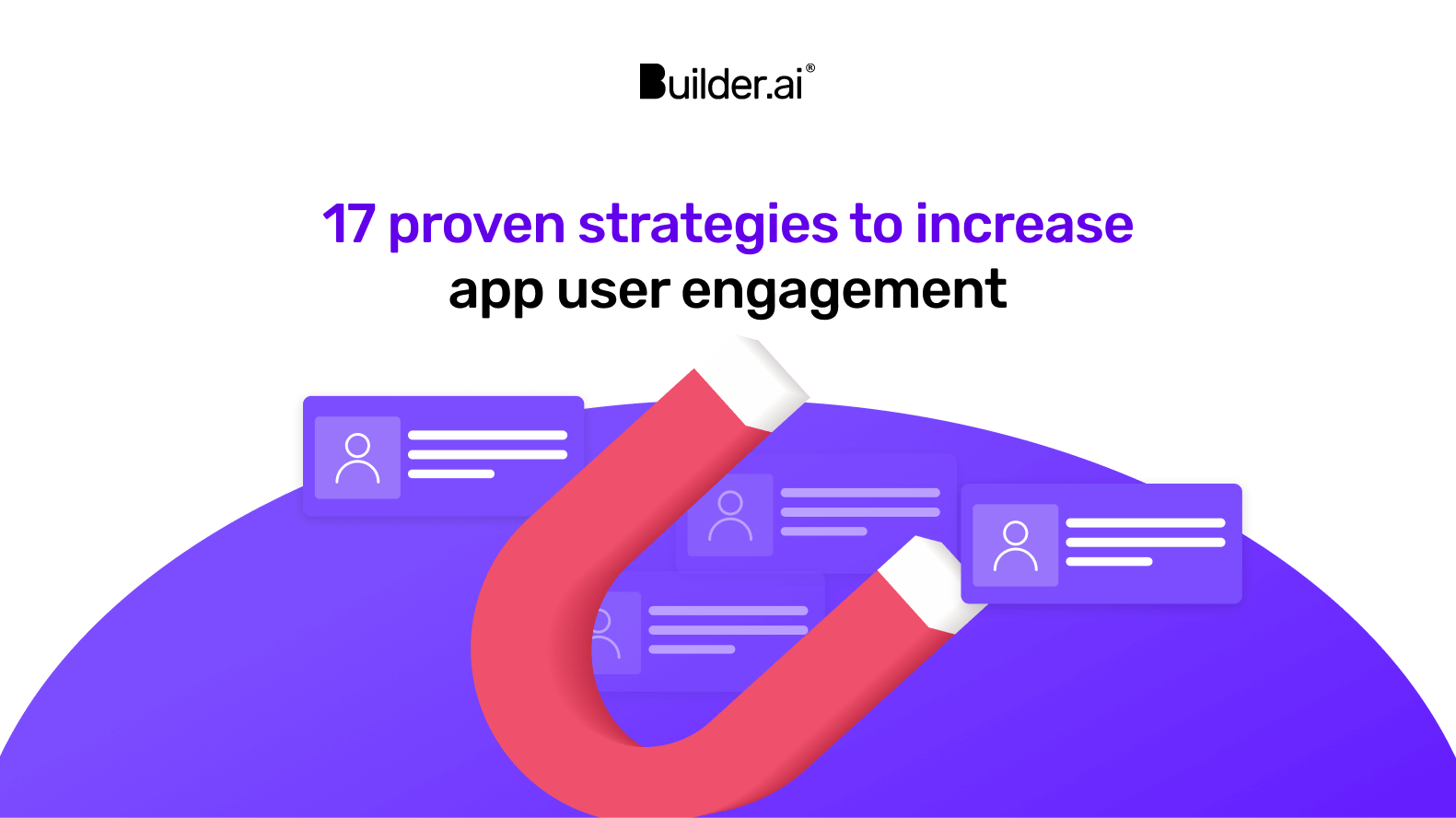

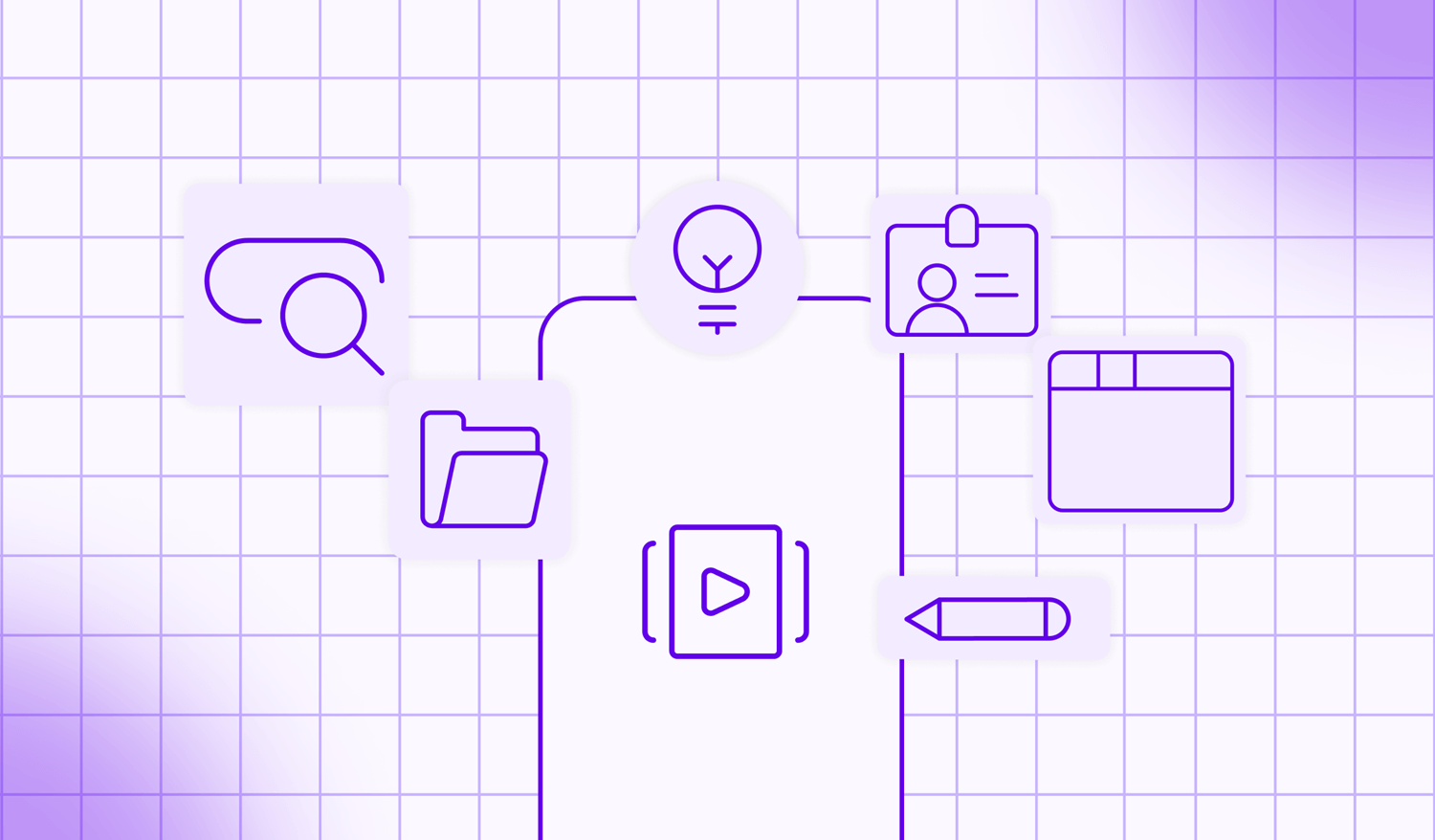

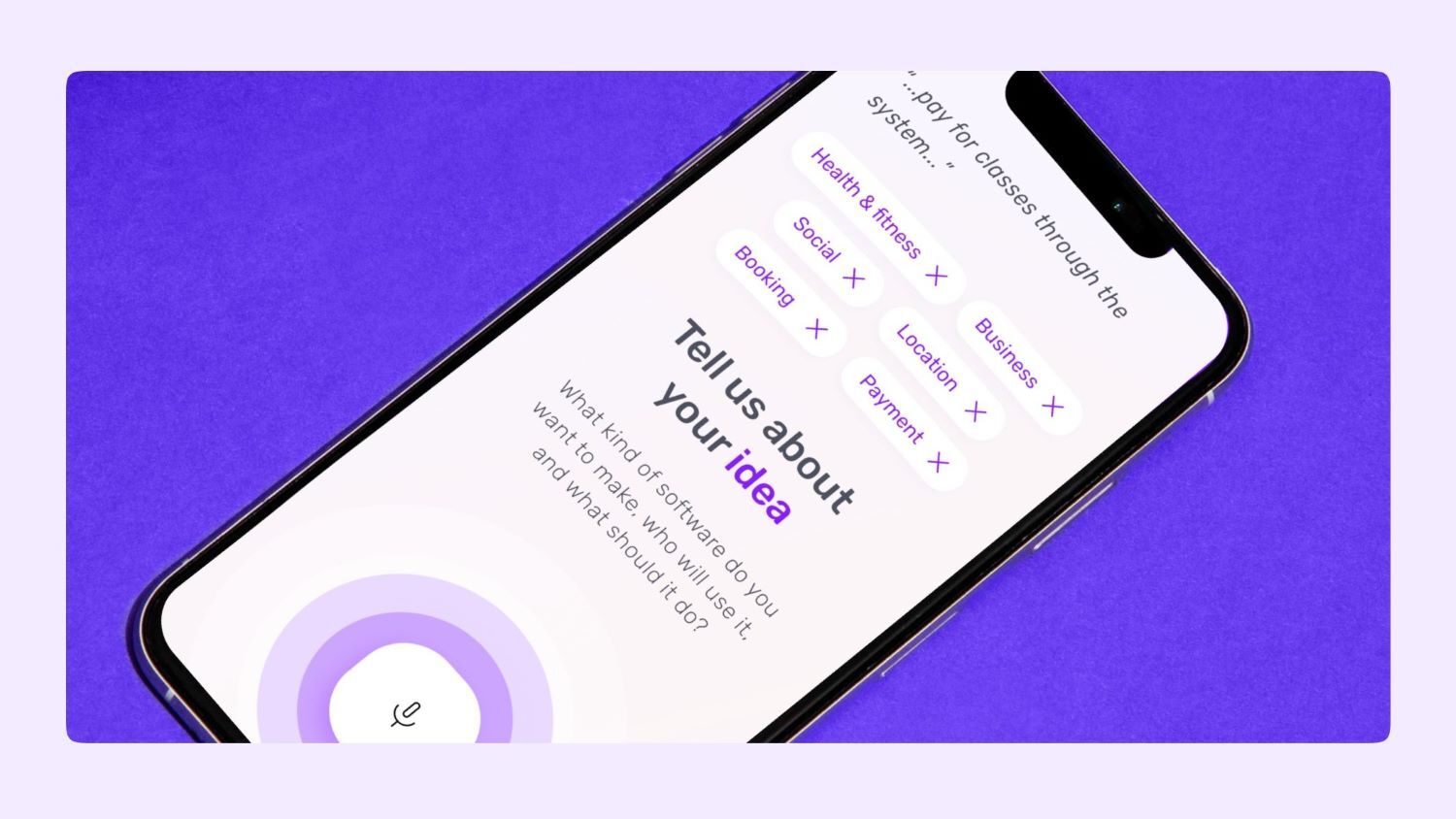






 Facebook
Facebook X
X LinkedIn
LinkedIn YouTube
YouTube Instagram
Instagram RSS
RSS


